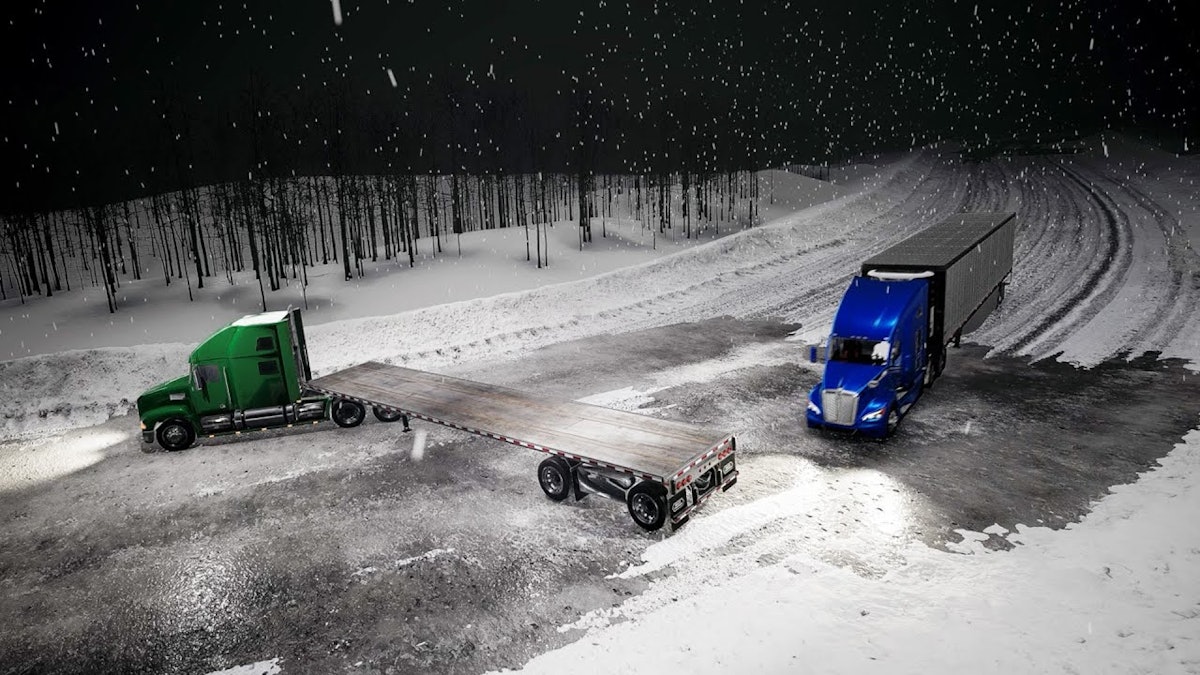
Speaker 1: At 11 p.m., peering through a snow squall on a dark and lonely interstate highway in Alaska, tractor-trailer driver John Doe headed toward Fairbanks under full load.
Doe spotted the rapid approach of headlights in his West Coast mirror. While the posted speed limit was 65 mph, lousy conditions had motivated Doe to back down to 35. But the flatbed-hauling nut behind him was rolling along at warp speed.
Before long, the flatbed’s rig flashed past and disappeared like a ghost into the white haze ahead.
Minutes later, the snow squall abated into a light snow, visibility slightly improved and Doe crept up to 55 as he blindly crested a hill preceding a long downgrade curve.
Oh no! Before halfway down the grade, the flatbed was jackknifed completely across both lanes! And the road was glazed with ice!
Doe slowed as best as he could and the tractor’s antilock brakes enabled him to steer toward the rear of the trailer before impacting and sliding to a stop.
Since Doe contested the preventable accident warning letter from his safety director, the National Safety Council’s Accident Review Committee was asked to pass judgment. NSC ruled against Doe, noting that he’d blindly hit the slippery downgrade at 55 mph. In sum, he’d been going too fast for conditions.